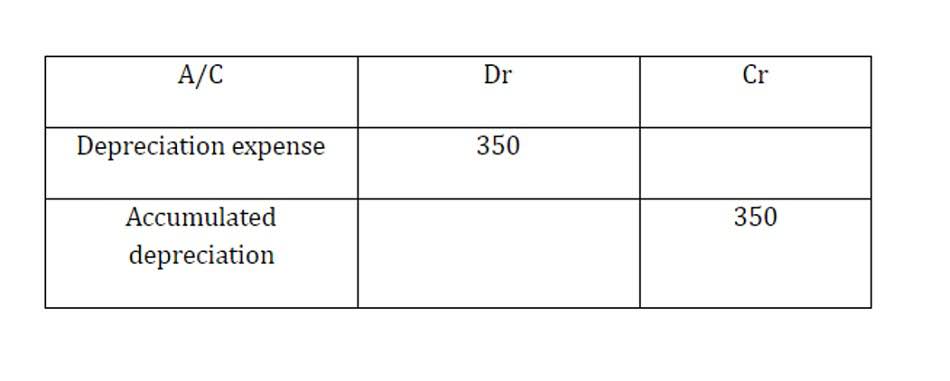
Proponents of this accounting method believe that the Savings and Loans Crisis of 1989 could’ve been prevented if banks and other lending entities had used this accounting method rather than the historical cost accounting. The crises occurred because banks recorded the original price they paid for assets, making adjustments in the books only when assets were sold. https://www.bookstime.com/ The mark-to-market accounting treatment is primarily used in financial services and investments, where assets must be marked to market daily. It’s one of the accounting methods that has been helpful in basic accounting when assets need to be adjusted to match the current market conditions. Below you can see how mark-to-market caters to specific industries and areas of accounting. The mark-to-market accounting principle involves adjusting the value of an asset to reflect the current market conditions.
Mark to Market Losses in 2008
The value is calculated based on how much a company can make if it sells the asset today. For example, mark to market accounting could have prevented the Savings and Loan Crisis. They listed the original prices of real estate they bought and updated prices only when they sold the assets. In trading and investing, certain securities, such as futures and mutual funds, are also marked to market to show the current market value of those investments.
- Calculating net worth, an important personal finance ratio, is also a simple form of mark to market accounting.
- Mark-to-market valuation means that companies must value some assets and liabilities on their balance sheets based on the current market prices for those items.
- In MTM accounting, we need to account for this increase in value as an unrealized gain.
- However, mark-to-market losses can potentially generate tax deductions as well.
Find the talent you need to grow your business
- In personal accounting, the mark-to-market value of an asset will be the same as the cost to replace it at a given time, also known as replacement cost or the replacement value.
- The changes will be recorded using the double-entry accounting method, meaning when customers use their discount, the company will record a debit to the AR and credit the sales revenue for the total sales price.
- When a business prepares its balance sheet, some assets will be recorded at their historical cost or original purchase price, while others will need to reflect current market value.
- Mark to market account is a legal accounting practice, and is overseen by the FASB.
- The daily mark to market settlements will continue until the expiration date of the futures contract or until the farmer closes out the position by going long on a contract with the same maturity.
- For Over-The-Counter (OTC) derivatives, when one counterparty defaults, the sequence of events that follows is governed by an ISDA contract.
- The idea behind MTM was to provide a more accurate representation of an organization’s financial performance by matching the value of its assets and liabilities with their current market value.
During the 2008 financial crisis, mark to market accounting practices were a target of criticism as the housing market crashed. The market for mortgage-backed securities vanished, meaning the value of those securities took a nosedive. • Pros of mark to market accounting include accurate valuations for asset liquidation, value investing, and establishing collateral value for loans. Experienced business owners and those looking to buy a business would do well to take a lesson from the Enron scandal and avoid using unethical accounting strategies to hide debt from creditors and investors. Speaking to a qualified tax advisor can really help a business leverage legal strategies for financial success, without running afoul of tax law (or the SEC, if the business offers publicly traded securities).

What is mark-to-market in real estate?

In stock trading, bookkeeping mark to market value is determined for securities by looking at volatility and market performance. Specifically, you’re looking at a security’s current trading price then making adjustments to value based on the trading price at the end of the trading day. Mark-to-market accounting helps lenders determine the true fair market value of a potential borrower’s collateral, and helps lenders develop a better sense of whether or not it makes sense to extend a loan, and if so, how much.

Adjusting Balance Sheets for Mark-to-Market Valuations

If the asset ended up taking a loss, Enron would transfer the asset to a subsidiary that wasn’t on their own accounting record, essentially making it disappear. A serious financial crisis, such as the Great Depression following the stock market crash of 1929 or the Great Recession of 2008, can lead businesses to mark down their assets, since these assets have, after all, lost value. By the same token, market-to-market accounting can present a more accurate picture of the financial health of a company or individual seeking a loan. Mark-to-market accounting is also used to register the replacement costs of personal assets. An example would be an insurance company providing policyholders with a replacement cost for a home if a need arises to rebuild it from scratch, which may be very different than the value of the home at the is mark to market accounting legal time of its purchase.
- Note that mutual funds’ prices do not fluctuate during the trading day, and purchases and redemptions happen only at the end of the day after the funds assets are marked to market.
- The debate occurs because this accounting rule requires companies to adjust the value of marketable securities (such as the MBS) to their market value.
- These articles are intended to provide general resources for the tax and accounting needs of small businesses and individuals.
- That can include certain accounts on a company’s balance sheet as well as futures contracts.
- As mentioned, mark-to-market accounting provides a realistic financial picture, especially for businesses in the financial industry.
Mark to market is, as discussed, an accounting method that’s used to calculate the current or real value of a company’s assets. Mark to market is a helpful principle to understand, especially if you’re interested in futures trading. But if the market moves against you and your futures contracts drop in value, your cash balance would adjust accordingly. You’d have to pay attention to maintenance margin requirements in order to avoid a margin call. Mark to market accounting can be useful when evaluating how much a company’s assets are worth or determining value when trading securities. As mentioned, mark-to-market accounting involves tabulating the fair market value of an asset.

